Best Croatian Islands For Wine Lovers
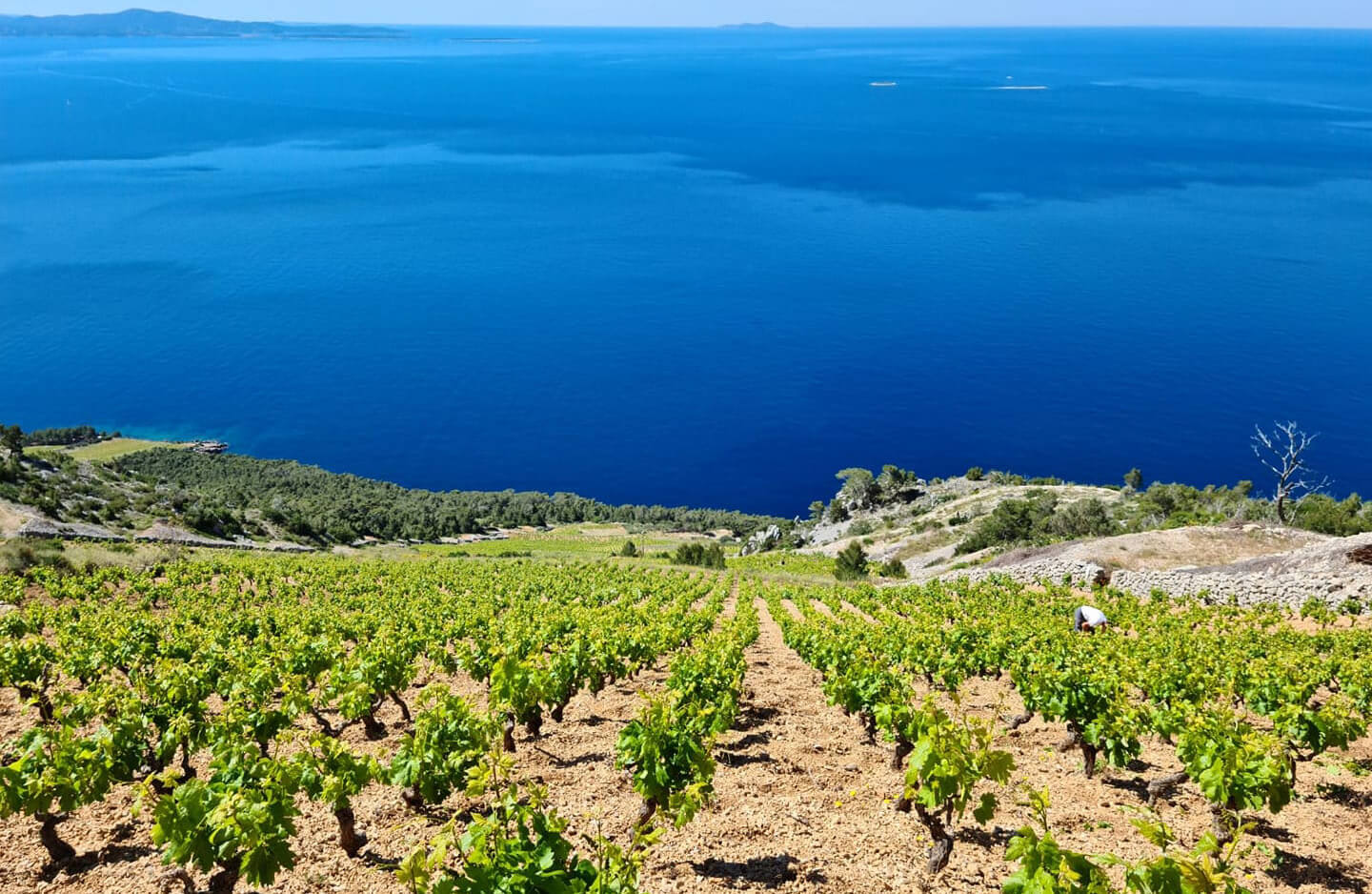
With its breathtaking winemaking history, Croatia and its Dalmatian coast are a wine lover’s must-visit destination. This captivating region stretches along the Adriatic coastline and includes a variety of islands waiting to be explored. For wine enthusiasts, Dalmatia is the perfect place to savor some of Croatia’s most exquisite and intricate wines. From the sun-drenched vineyards on steep slopes to the charming wineries, every corner of the Dalmatian coast exudes a distinctive and authentic allure. This article delves into the best Croatian islands for wine enthusiasts, uncovering their distinct viticultural offerings, winemaking traditions, and must-visit vineyards and wineries. These islands have been inhabited for thousands of years, witnessing the ebb and flow of various civilizations. From the Greeks to the Romans, the Austro-Hungarian crown, the trials of two World Wars, and even the era of Communism, the islands have stood as witnesses to history. Yet, amidst the diverse tapestry of their past, one element has remained constant—the love for wine.
Hvar
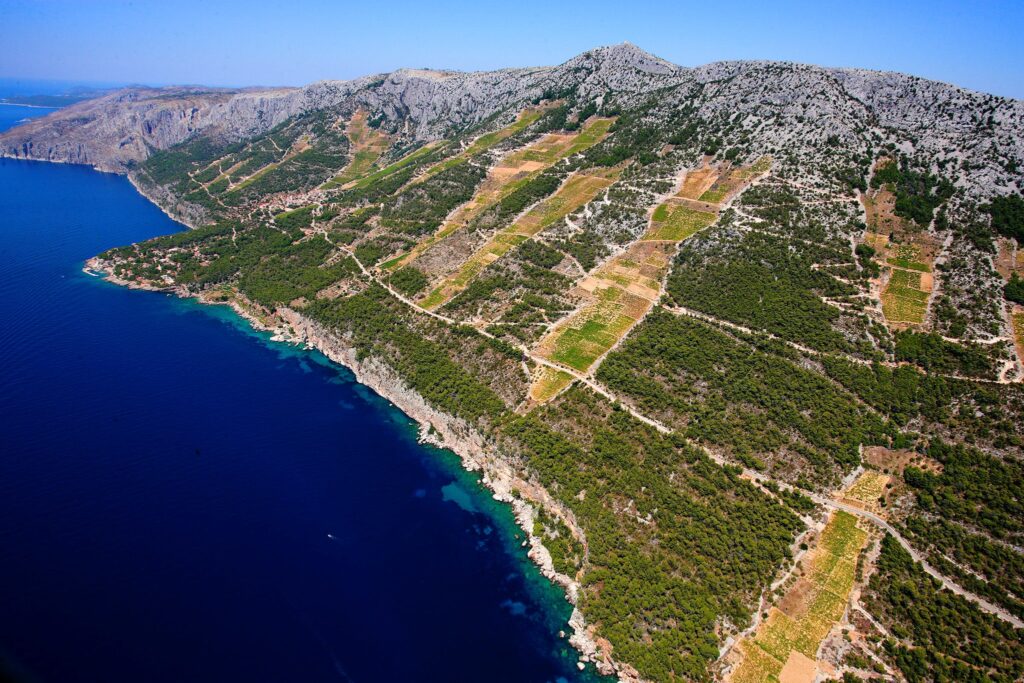
Hvar Island, renowned for its nightlife, lavender fields, and crystal-clear waters, is also a paradise for wine enthusiasts.
A long and storied tradition of viticulture o Hvar island dates back thousands of years.
The Mediterranean climate, soil composition with abundant sunshine, and gentle sea breezes create the perfect terroir for cultivating exceptional indigenous grape varieties, resulting in wines of exceptional quality and character.
Hvar Island’s winemakers, proud custodians of their ancestral craft, skillfully blend modern winemaking techniques with age-old traditions to produce a remarkable array of wines that reflect the island’s unique terroir.
From crisp and refreshing whites, such as the acclaimed Posip and Bogdanusa, to robust and velvety reds like Plavac Mali from renowned Ivan Dolac or Sv. Nedjelja appellations and every sip tell a tale of passion, dedication, and a deep connection to the land.
Embark on a sensory journey as you explore the island’s vineyards, with their terraced slopes cascading down to the azure sea, and visit charming wineries that invite you to indulge in tastings of their finest vintages.
Exploring Hvar’s wineries:
- Plenković “Zlatan Otok” Winery: Situated in Sveta Nedjelja, Plenković Winery is one of the most famous wineries in Croatia. With a fabulous tasting room with breathtaking views of the Adriatic Sea and vineyards cascading down the steep slopes, this winery is a must-visit. Their Plavac Mali wines are highly regarded, and a tour here offers a chance to witness the winemaking process firsthand.
- Plančić Winery: Plančić Winery stands as a testament to a rich family heritage that began in 1919 and continues to thrive today. With an unwavering commitment to tradition, the Plančić family cultivates and nurtures indigenous grape varieties unique to Hvar island. Their white wines boast the vibrant flavors of Bogdanuša and Parč, while the red wines exude the bold characteristics of Plavac Mali and ancient grape variety Darnekuša.
- Duboković Winery: Located in Jelsa, the winery is owned and operated by Ivo Duboković, who is known as one of Croatia’s leading boutique winemakers. The winery offers a unique wine-tasting experience in its magical cellars. Visitors can enjoy tastings in a dark candlelit room, surrounded by wine barrels and bottles, creating an intimate and atmospheric setting. The tastings include a selection of wines, including red and orange wines. Duboković Winery produces a range of wines, and some of their most famous labels include Medvid and Medvjedica.
- Tomić Winery: Located in Jelsa, Tomić Winery is a family-owned establishment with a long-standing reputation for producing exceptional wines. Their extensive portfolio includes red and white wines, with Plavac Mali, Pošip, and traditional Dalmatian dessert wine Prošek as their specialties. A visit to their cellar provides insight into their traditional winemaking techniques.
Must-try wines made from indigenous grape varieties:
- Bogdanuša: White grape variety is grown on the Croatian island of Hvar, specifically on the Stari Grad Plain. It is an indigenous Croatian grape variety. Wines made from Bogdanuša grapes are typically dry, have a green-yellow to golden color, and exhibit floral aromas and hints of peach. Wineries like Plančić are known for their outstanding Bogdanuša wines, which truly taste Hvar’s terroir.
- Parč: The white grape variety is golden yellow with a specific muscat flavor. It is made from the autochthonous grape variety of the same name, which is cultivated exclusively on Hvar. Try Plančić Ager and Ager Selection labels, a bold wine made from Bogdanuša and Parč grape varieties.
- Pošip: Another noteworthy white grape variety, Pošip, produces full-bodied and luscious wines. Look for Pošip wines from producers like Plenković and Tomić Winery, known for their dedication to quality and meticulous winemaking techniques.
- Darnekuša: An ancient rare red wine grape variety specifically tied to the island of Hvar. The grape is often blended with another local grape variety called Plavac Mali, resulting in deep, ruby-colored wine. The unique terroir of Hvar contributes to the distinct character of the Darnekuša wine. Wines are often praised for freshness and black currant, cherries, and herbs aromatic profile.
- Plavac Mali: Known as the king of Croatian red wines, Plavac Mali is a robust and full-bodied wine that thrives in the Dalmatian wine region. Look for bottles from renowned wineries such as Plenković-Zlatan Otok, Duboković, and Tomić, celebrated for their exceptional Plavac Mali expressions in Hvar.
Hidden gems and insider tips:
- Make sure to visit the Stari Grad Plain, a UNESCO World Heritage site where vineyards have been cultivated for over 2,400 years. Take a leisurely walk through this historical landscape and explore the ancient stone walls and vineyard plots that still produce grapes today.
- Attend one of the many wine festivals held on the island, such as the Hvar Wine Festival, or book some of the Hvar Wine Tours. These events and tours allow one to taste an extensive selection of Hvar’s wines and interact with local winemakers.
- Hire a knowledgeable local guide who can offer insider insights into Hvar’s wine culture, introduce you to hidden wineries, and provide in-depth knowledge about the island’s winemaking traditions.
Brač
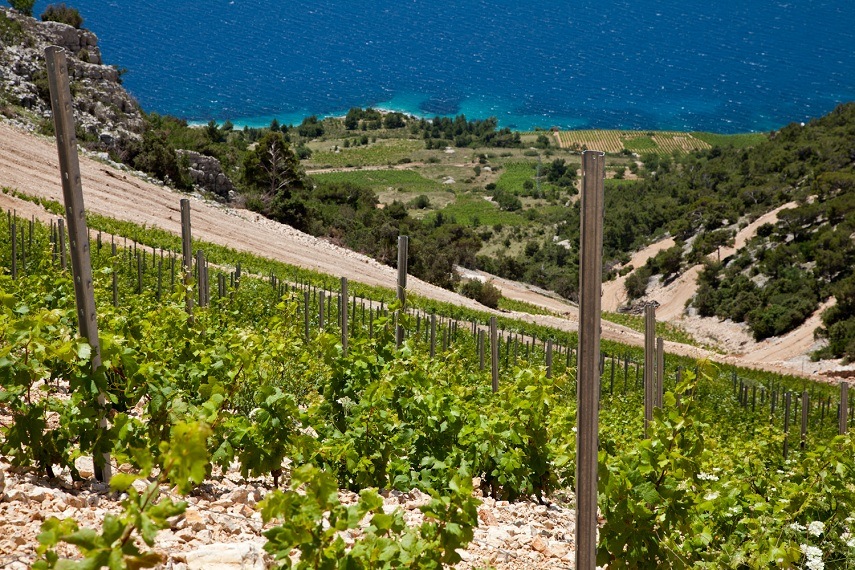
Among many Croatian wine treasures, the island of Brač stands out as a true gem for wine enthusiasts. The isalnd offers a captivating blend of stunning landscapes, Mediterranean charm, and, most importantly, exceptional wines.
Brač, known for its iconic Zlatni Rat (Golden Horn) beach, is also a paradise for wine lovers. Despite its size and favorable altitude for cultivation, Brač is not brimming with wineries.
Brač is a captivating island that holds many treasures beyond its shimmering marble and delectable wines.
Shrouded by gleaming white peaks, its center offers a glimpse into a bygone era of quarrying mastery.
Exploring Brač wineries:
- Stina Winery: Situated on Bol’s waterfront, right next to the Zlatni Rat beach, Stina breathed new life into the ailing Agricultural Cooperative of Bol when it took over in 2009. Since then, this remarkable winery has been producing some of the finest Plavac Mali, Pošip, Vugava and even Tribidrag wines in all of Dalmatia. Moreover, it boasts an impressive visitors’ center that welcomes wine enthusiasts from far and wide.
- Senjković Winery: Located in the picturesque village of Dračevica, Senjković Winery is a family-owned establishment dedicated to preserving the island’s viticultural heritage. Their focus on organic and sustainable practices shines through in their wines, particularly their Plavac Mali and the limited-production Senjković Rosé. A visit to Senjković offers a genuine connection with Brač’s winemaking legacy.
Must-try wines made from indigenous grape varieties:
- Pošip: Brač is also home to the celebrated Pošip grape, known for its aromatic and refreshing white wines. Pošip wines display a pale golden hue, offering delightful notes of citrus, stone fruits, and a subtle floral character. Wineries such as Tomić and Nenad Duboković are renowned for their exceptional Pošip wines.
- Vugava: Although native to Vis island, Stina Winery produces Vugava that you simply must-try.
- Tribidrag (also known as Zinfandel and Crljenak): red grape variety grown in notable regions such as Apulia in Italy, California in the United States, and Dalmatia in Croatia, where it originated. In fact, after the discovery of their genetic similarity to Zinfandel, Tribidrag gained attention from winemakers and the market. We highly recommend Stina Tribidrag.
- Plavac Mali: One of Croatia’s most notable grape varieties, Plavac Mali, thrives on Brač Island. These robust red wines exhibit deep color, bold tannins, and flavors of dark berries, dried fruits, and hints of Mediterranean herbs. Look for bottles from renowned wineries such as Stina Winery, celebrated for their exceptional Plavac Mali selection from the best Brač appellations.
Hidden gems and insider tips:
- To truly immerse yourself in Brač’s wine culture, consider embarking on a guided wine tour. Several local tour operators, such as Brač Wine Tours, offer curated experiences that showcase the island’s top wineries and allow visitors to sample a wide array of wines, including rare and limited editions.
- Brač hosts various wine festivals throughout the year, providing an excellent opportunity to experience the island’s wines in a vibrant atmosphere. Grape and Wine Festival held in October, attracts both locals and tourists, offering a lively celebration of Brač’s winemaking traditions.
Korčula
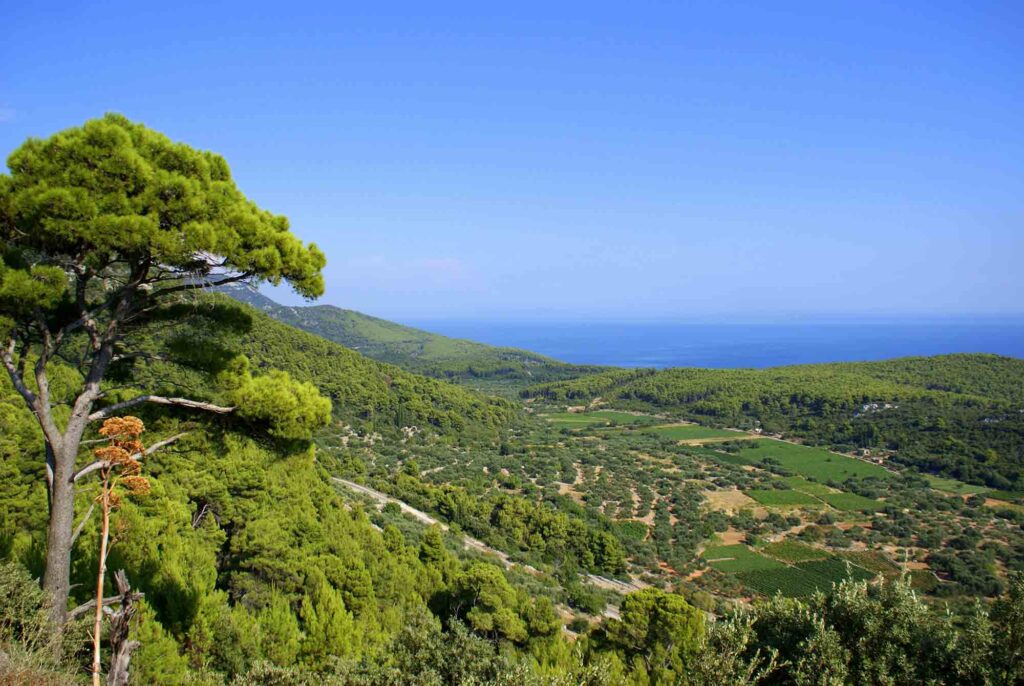
When you set foot on the enchanting island of Korčula, whether or not you embrace the intriguing claim of it being Marco Polo’s birthplace, you’ll discover a destination that is nothing short of extraordinary.
Venturing further into the heart of the island, you’ll find an exquisite concentration of wineries nestled amid its scenic landscapes. Recognized as a white wine haven, the Korčula region predominantly thrives on the esteemed white grape variety called Pošip and Grk, which continues to reign supreme today.
Visit the small villages of Lumbarda, Čara, and Smokvice, where you’ll find family-run wineries offering excellent Grk, Pošip and Plavac Mali wines.
Immerse yourself in the island’s winemaking traditions by exploring the vineyards and cellars, accompanied by local winemakers eager to share their knowledge.
Discover more about Korčula with our ultimate guide.
Exploring Korčula wineries:
- Zure Winery: Family-owned winery located in Lumbarda. The Zure family has been cultivating and producing high-quality wines since 1996. They have received prestigious awards, including gold and platinum awards from Decanter. The Zure wines are highly regarded and appreciated both locally and internationally. Zure Winery has a restaurant on-site that complements the wine experience. The restaurant serves homemade dishes emphasizing local ingredients and traditional flavors.
- Bire Winery: Located in Lumbarda, Bire Winery is known for producing high-quality wines, particularly its indigenous Grk and Plavac Mali. Bire Winery is recognized for its organic and ecologically cultivated premium wines. The winery offers a tasting menu with small food pairings, providing a special experience for wine enthusiasts.
- Nerica Winery: For the past fifteen years, PZ Nerica, a small family winery, has been dedicated to acquiring and nurturing vineyards in the picturesque Čara region and its surroundings. Reflecting the traditional values of viticulture, the Krajančić family meticulously tends to all their vineyards by hand. This labor-intensive approach yields an ever-improving grape quality with each passing year.
- Cebalo Winery: A family-run winery in Lumbarda, known for producing the indigenous white wine variety called Grk. The winery offers regular wine tastings where visitors can sample their wines and learn about the winemaking process.
- Black Island Winery: Located in Smokvica, the winery was opened in 2018 on the premises of the former Agricultural Cooperative. The winery is known for producing high-quality wines, particularly the Pošip variety. The vineyards of Black Island Winery are situated on the outskirts of Smokvica, providing an ideal terroir for growing grapes. The winery has gained a reputation for its dedication to preserving the rich history and taste of Pošip wine, offering visitors a unique experience and a glimpse into the island life of Croatia.
- Krajančić Winery: Situated in the village of Zavalatica, Krajančić Winery is known for its organic and biodynamic winemaking practices. Their Pošip wines are highly regarded for their complexity and elegance. Book a guided tour to learn about their sustainable approach and indulge in a tasting of their exquisite wines.
Must-try wines made from indigenous grape varieties:
- Grk: Grk is a unique and ancient grape variety mostly cultivated on the sandy soil around Lumbarda. Grk wines exhibit a unique and crisp character with notes of citrus and white flowers. The island’s microclimate, with warm days and cool nights, contributes to the grapes’ distinctive flavors, making Grk a must-try wine for any visitor.
- Pošip: One of the most prominent grape varieties indigenous to Korčula is Pošip, which thrives in the island’s sun-soaked vineyards. When done and harvested right, pošip wines are known for their golden color, floral aromas, and refreshing acidity.
- Plavac Mali: This red wine balances warmth, fruitiness, and full-bodied richness perfectly. Its intricate and harmonious profile captivates the senses with aromatic notes of dried plums, complemented by well-balanced acidity. We strongly recommend Bire Plavac Mali and Zure Plavac Mali.
Hidden gems and insider tips:
- Stroll through the cobblestone streets of Korčula’s Old Town, often called “Little Dubrovnik.” Admire the medieval architecture, visit the impressive St. Mark’s Cathedral, and enjoy panoramic views from the city walls. Don’t miss the birthplace of Marco Polo, a renowned Venetian merchant and adventurer.
- Rent a kayak or take a boat trip to explore the island’s secluded coves and pristine beaches. Vaja Bay, Pupnatska Luka, and Bacva Bay are among the most beautiful spots to relax, swim, and soak up the sun.
- After a day of wine tasting, treat your taste buds to the island’s culinary delights. Visit traditional konoba or Michelin-starred restaurants and try local specialties such as black risotto, octopus peka, and freshly caught fish grilled to perfection. Pair your meal with a glass of Korčula’s finest wine for an unforgettable dining experience.
- Experience a captivating performance of the Moreska sword dance, a traditional Korčula ritual dating back centuries. This unique dance depicts a battle between two groups dressed in colorful costumes, wielding swords, and accompanied by traditional music. The Moreska is a cherished cultural heritage of the island and a spectacle not to be missed.
Vis
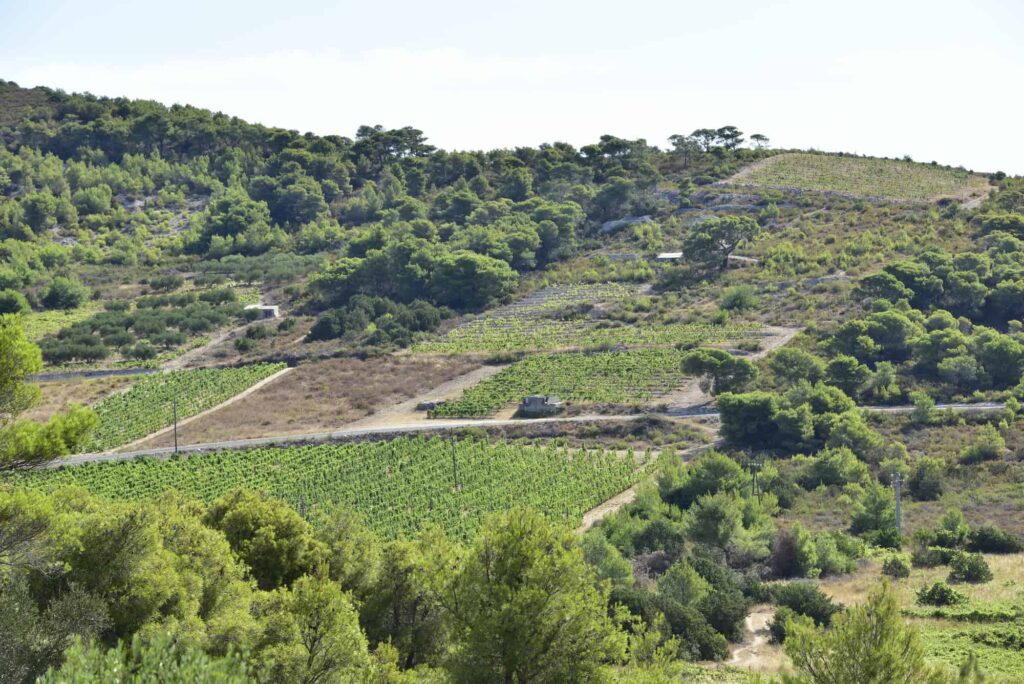
Vis Island, located furthest from the mainland, remained closed to foreign visitors until 1989, preserving its authentic charm and traditional winemaking practices.
Vis Island, with its rich wine heritage, scenic landscapes, and warm hospitality, is a must-visit destination for wine lovers seeking an authentic and unforgettable experience.
The island’s favorable microclimate, featuring mild winters, abundant sunshine, and cool coastal breezes, provides optimal conditions for growing grapes and producing exceptional wines.
From tasting exceptional local wines to exploring the island’s stunning beaches and historical sites, Vis Island offers a captivating blend of wine, culture, and natural beauty.
Exploring Vis wineries:
- Vislander Winery: A winery and distillery that offers various products, including wines, gin, rakija (a traditional brandy), and other spirits. The brand is known for producing quality beverages, particularly its Plavac Mali wines selection and high-quality wines from Vis indigenous variety Vugava (also known as Bugava). With every bottle, Vislander showcases the unique terroir of Vis, inviting wine enthusiasts to embark on an extraordinary sensory journey.
- Bunčić Winery: Toni Bunčić is a skilled garagiste who produces exceptional Plavac Mali wines using carefully selected grapes from Voščice and Smokovo vineyards. His passion extends beyond winemaking, as he also expertly crafts natural cosmetics using the bountiful gifts of nature.
- Lipanović Winery: Situated on the island’s southeastern part, Lipanović Winery is known for its organic and sustainably produced wines. Their winery, nestled within an old submarine bunker, provided an awe-inspiring backdrop for wine tastings, captivating visitors with its picturesque charm.
- Senjanović Winery: Senjanović’s commitment to crafting exceptional wines has significantly impacted the island’s viticulture. Their dedication to quality and an unwavering pursuit of excellence in producing Plavac Mali wines have cemented their place among Vis island’s top wineries.
Must-try wines made from indigenous grape varieties:
- Vugava: Among the island’s signature white varietals, Vugava shines with its delicate aroma and crisp, refreshing taste. This indigenous grape variety produces elegant wines with citrus notes, ripe apricot, and Mediterranean herbs.
- Plavac Mali: Considered the king of Croatian red wines, Plavac Mali is a robust and full-bodied varietal. Grown in the varied micro appellations and steep terraces of Vis Island, this grape produces wines with rich flavors of dark berries, hints of spice, and a distinct earthy character.
Hidden gems and insider tips:
- After indulging in wine tastings, take the time to discover the island’s pristine beaches. Stiniva Beach, hidden behind towering cliffs, and the pebble-strewn Srebrna Beach are two of Vis Island’s most captivating coastal spots.
- Embark on a boat excursion to the mesmerizing Blue Cave (Modra špilja). Situated on the nearby island of Biševo, this natural wonder enchants visitors with its iridescent blue hues, created by sunlight reflecting off the cave walls and illuminating the crystal-clear waters.
- Immerse yourself in the island’s history by visiting the 19th-century Fort George, offering panoramic views of the island, or explore the remains of the ancient Roman thermal baths and archaeological sites dotted across the island.
- Pair your wine adventures with Vis Island’s delectable culinary offerings. Sample traditional dishes such as octopus peka (slow-cooked octopus), lamb under the bell, and the famous fish stew, brodetto.
Krk
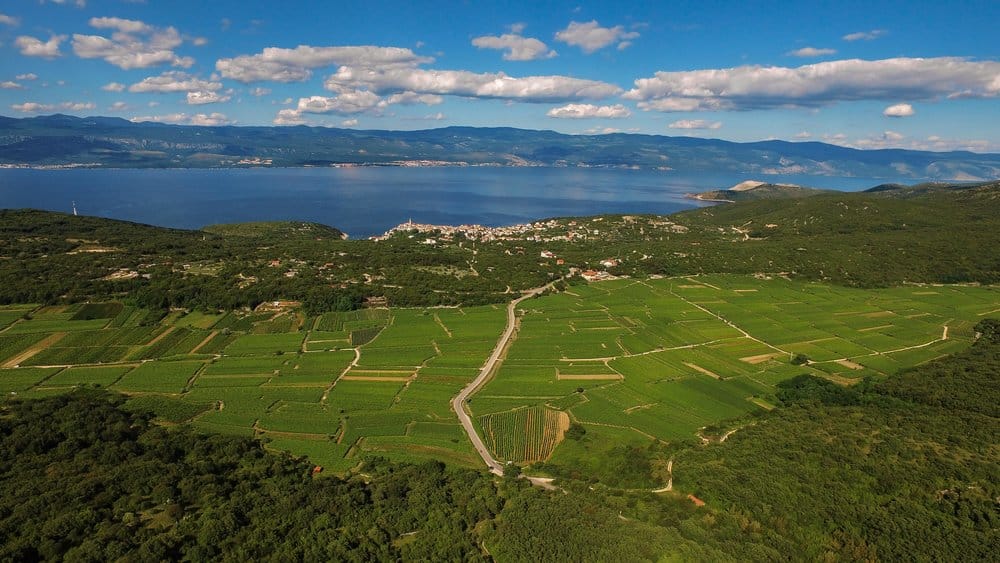
Krk Island has a long winemaking tradition dating back over two thousand years.
The island’s favorable Mediterranean climate, with abundant sunshine and cooling sea breezes, creates ideal conditions for grape cultivation.
The island’s diverse soil composition, ranging from limestone to red clay, further contributes to the distinct character of the wines produced here.
Exploring Krk wineries:
- Šipun Winery: Šipun Winery is a small boutique winery located in Vrbnik. The winery has a rich tradition of grape cultivation that spans several generations in the Dobrinčić family. It was founded in 2003 and is known for producing high-quality wines, particularly the native variety called Žlahtina. The winery focuses on sustainable practices and takes pride in growing primarily indigenous grape varieties.
- Ivan Katunar Winery: Ivan Katunar Winery is a wine house in Vrbnik. It continues the family tradition of wine production and offers wine tastings and cellar tours to visitors. The winery produces various wines, including Chardonnay, Žlahtina, Sansigot, Rose’, and Muškat. They also offer other products such as extra virgin olive oil, rakija (a traditional brandy), and Medica (honey liqueur).
- Toljanić Winery: A family-owned winery located in the Vrbnik Valley. The winery is known for its production of Žlahtina, an autochthonous white wine variety from the region. Toljanić Winery is owned by the Toljanić & Brusić family and was established in 1995. Despite being a small winery, it has gained recognition for its high-quality wines.
Must-try wines made from indigenous grape varieties:
- Žlahtina: When visiting Krk Island, wine lovers should not miss the opportunity to savor the indigenous white wine variety, Žlahtina. Grown exclusively on the island, Žlahtina grapes produce crisp, aromatic wines known for their fresh and fruity flavors, with notes of apple, tropical fruits, citrus, and refreshing acidity.
- Sansigot: A remarkable and ancient Croatian grape variety with a touch of medieval charm. Known also as “Sušćan crni,” this indigenous gem hails from the enchanting island of Susak (Sansego) and now thrives in the picturesque region of Vrbnik. Its story dates back centuries, and today it remains a rare find. The wine is medium-bodied, with perfumed floral aromas, fresh red and dark forest fruit.
Hidden gems and insider tips:
- Krk Island is renowned for its exceptional olive oil production. Take the opportunity to visit olive groves, participate in olive oil tastings, and learn about the ancient traditions of olive cultivation.
- Explore the charming town of Vrbnik, perched on a cliff overlooking the Adriatic Sea. Wander through its narrow streets, visit the historic Vrbnik Castle, and savor local delicacies at traditional taverns.
- Krk Island boasts stunning beaches and crystal-clear waters. Spend a day sunbathing, swimming, or engaging in various water sports such as snorkeling, scuba diving, or kayaking.
- Embark on a hiking adventure through the island’s untouched landscapes, such as the Biserujka Cave or the trail leading to the stunning viewpoints atop Obzova, the island’s highest peak.
Conclusion
The Croatian islands offer an enchanting blend of natural beauty and rich wine heritage, making them an ideal destination for wine lovers seeking a unique and authentic experience.
From the sun-drenched vineyards of Hvar to the ancient Grk wines of Korčula, the island-hopping journey through the Croatian archipelago is a voyage of discovery.
Each island has its own viticultural treasures, indigenous grape varieties, and passionate winemakers eager to share their craft.
So, raise a glass to the best Dalmatian islands for wine lovers and embark on an unforgettable wine adventure in this picturesque corner of the Mediterranean.



















